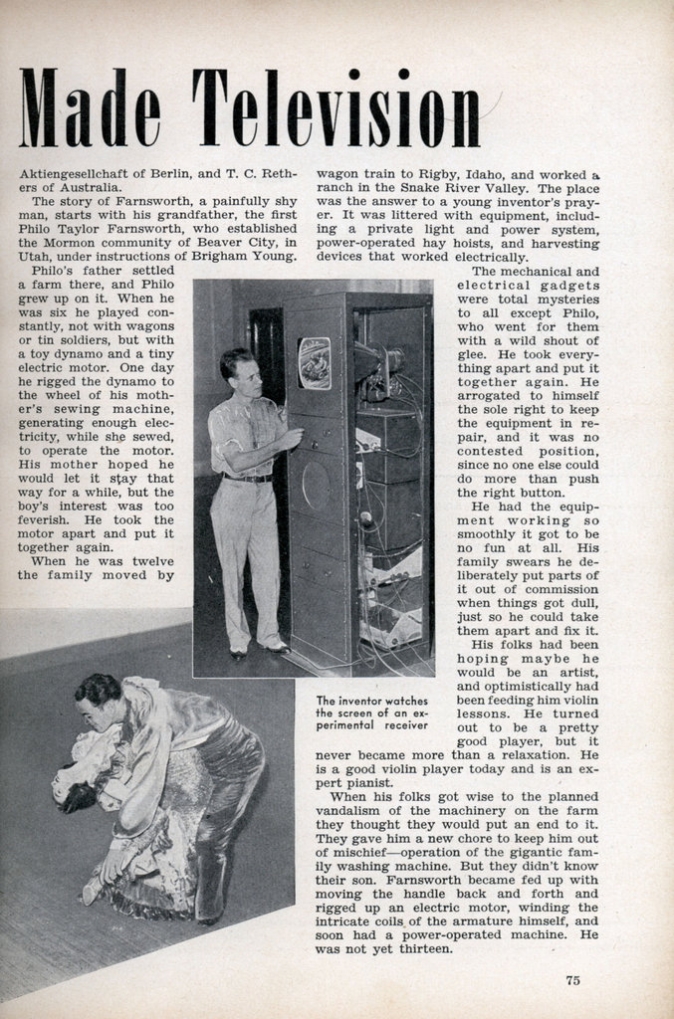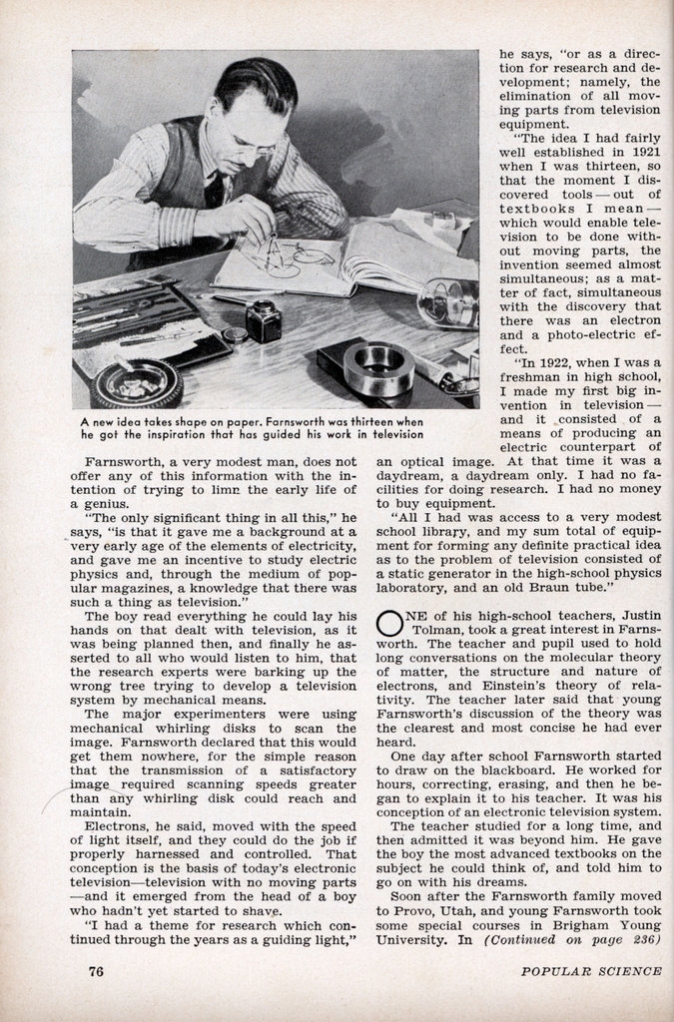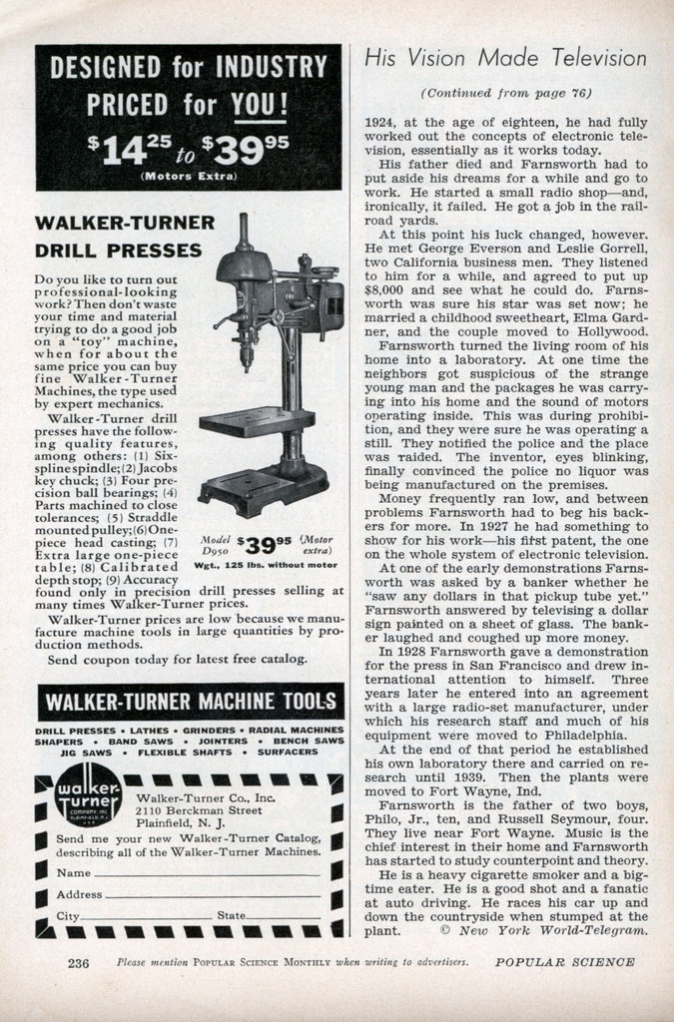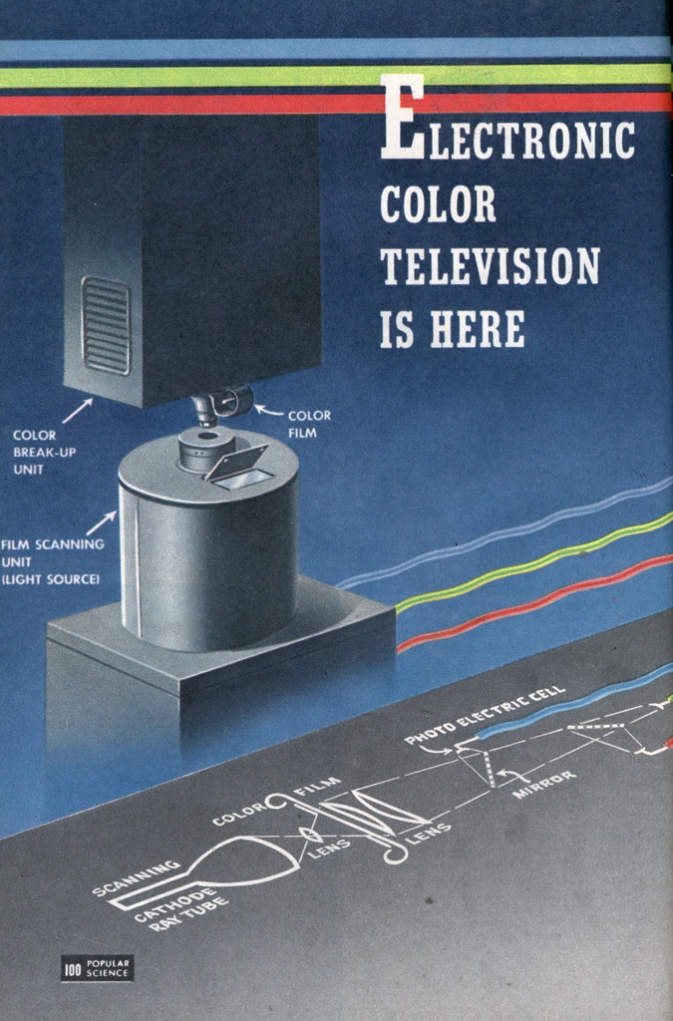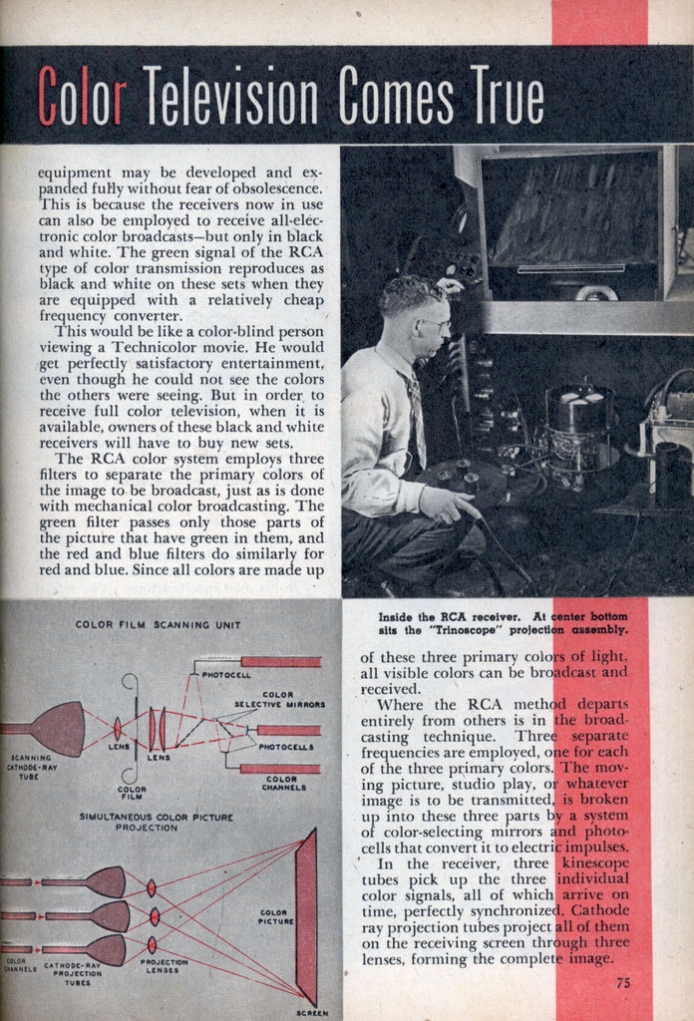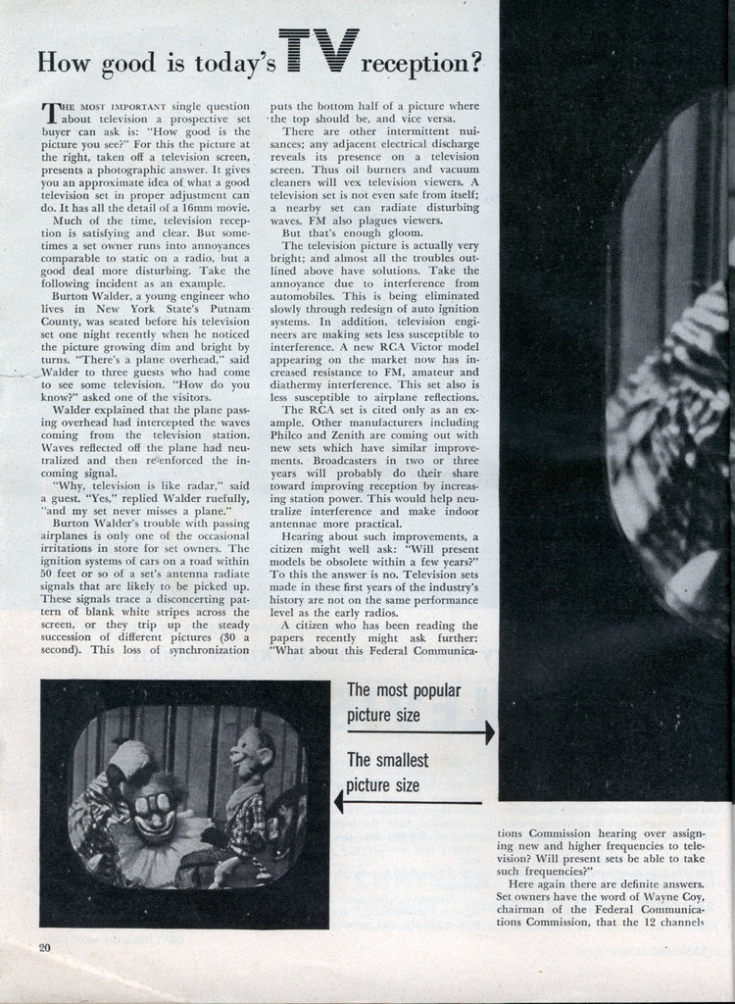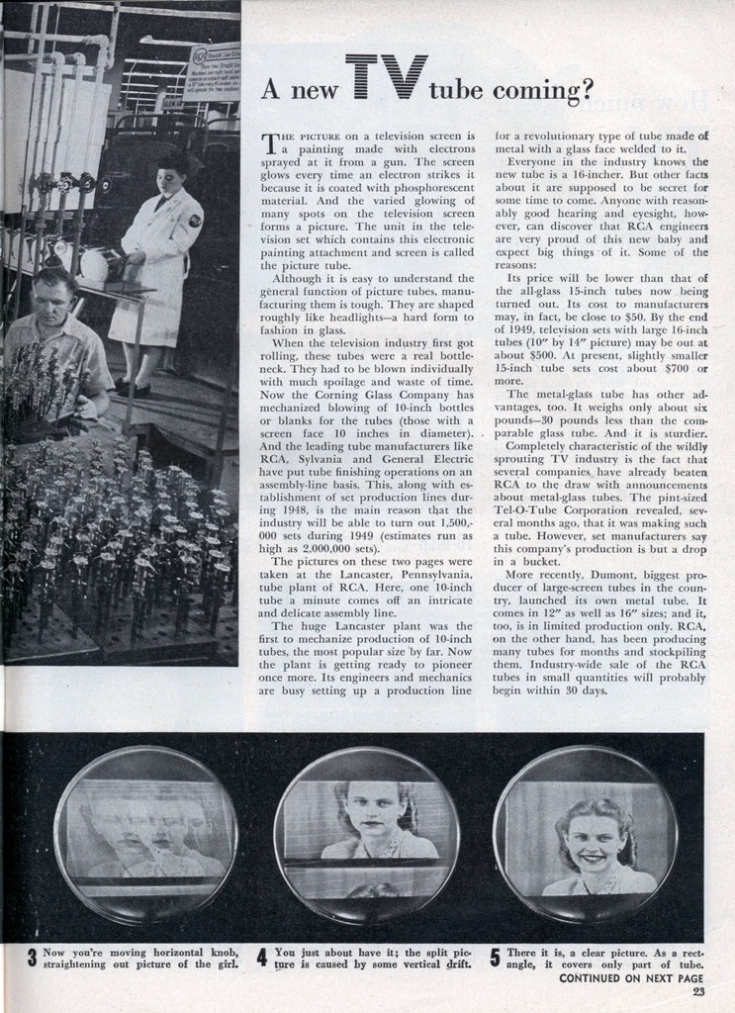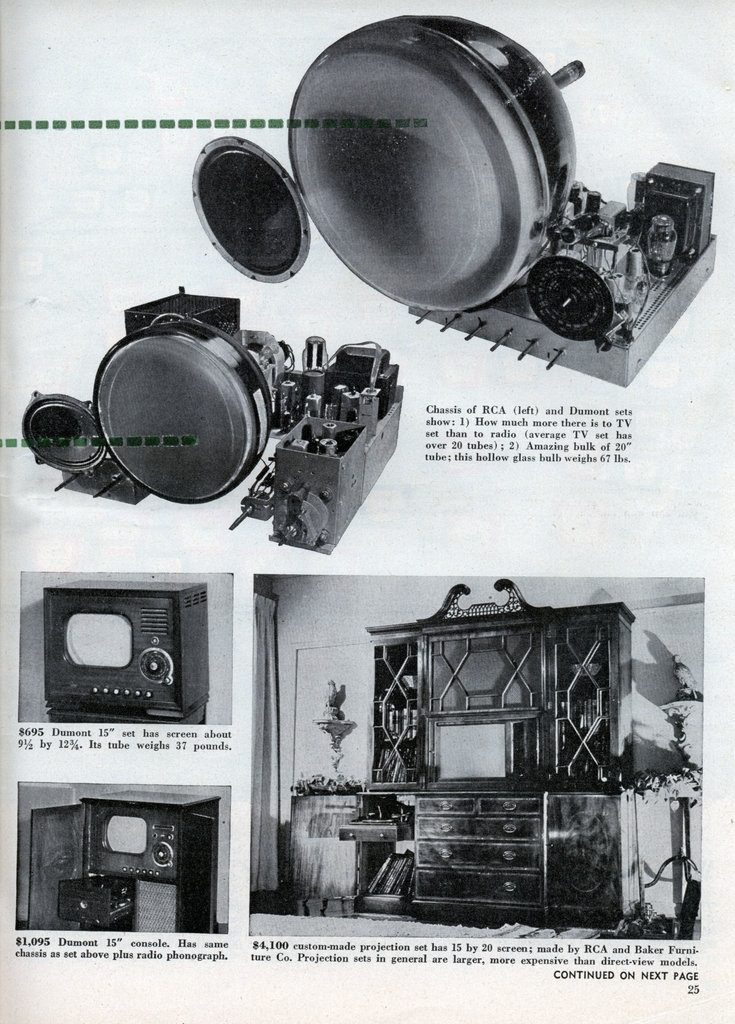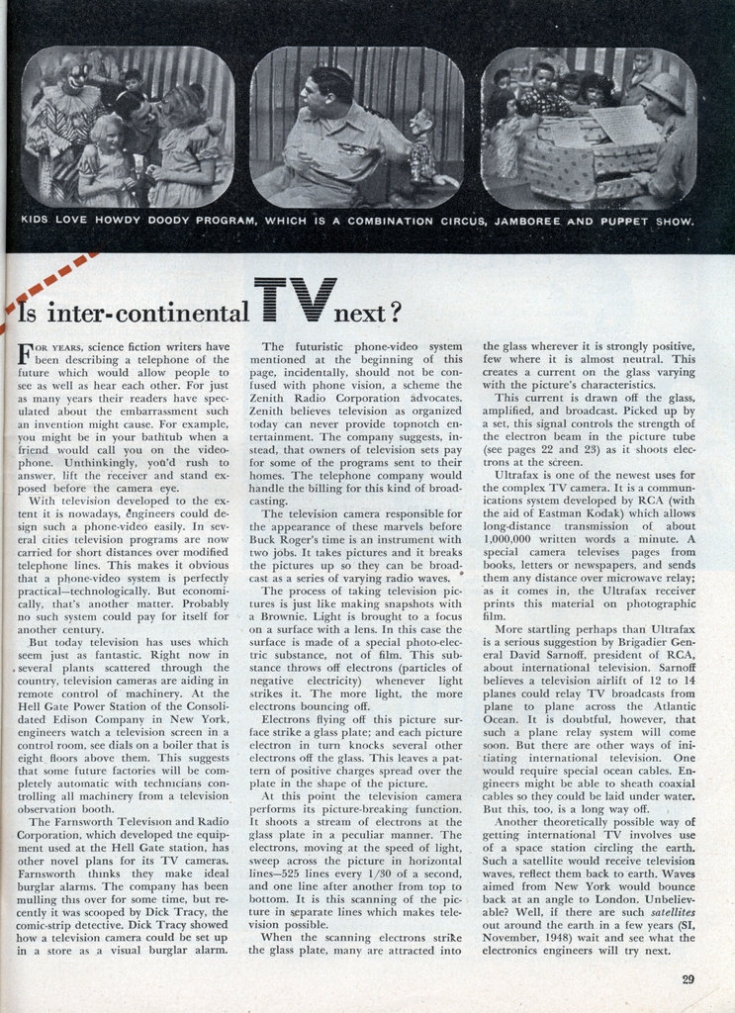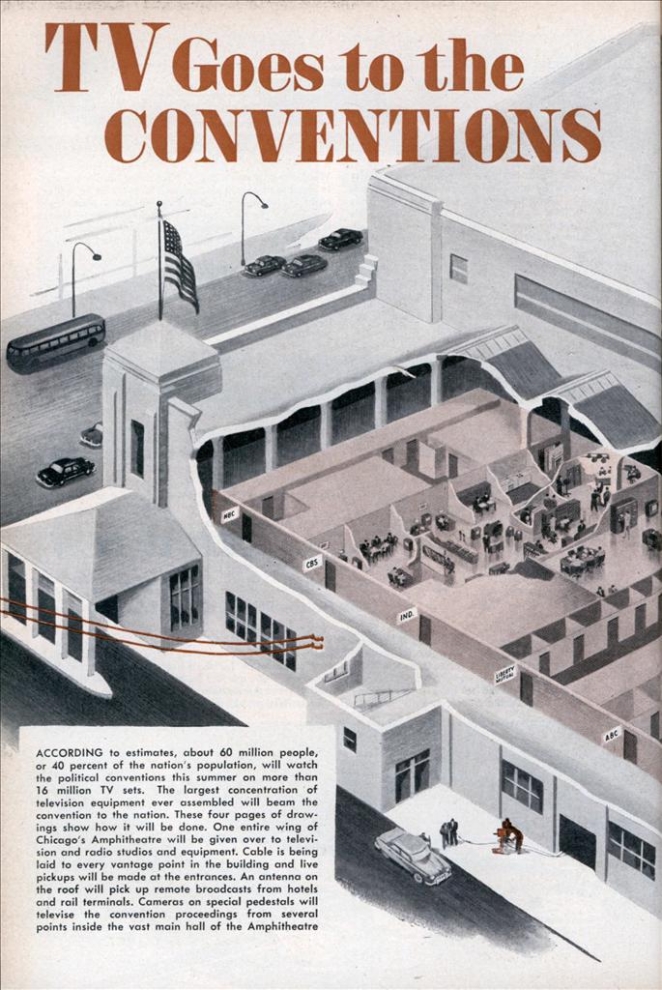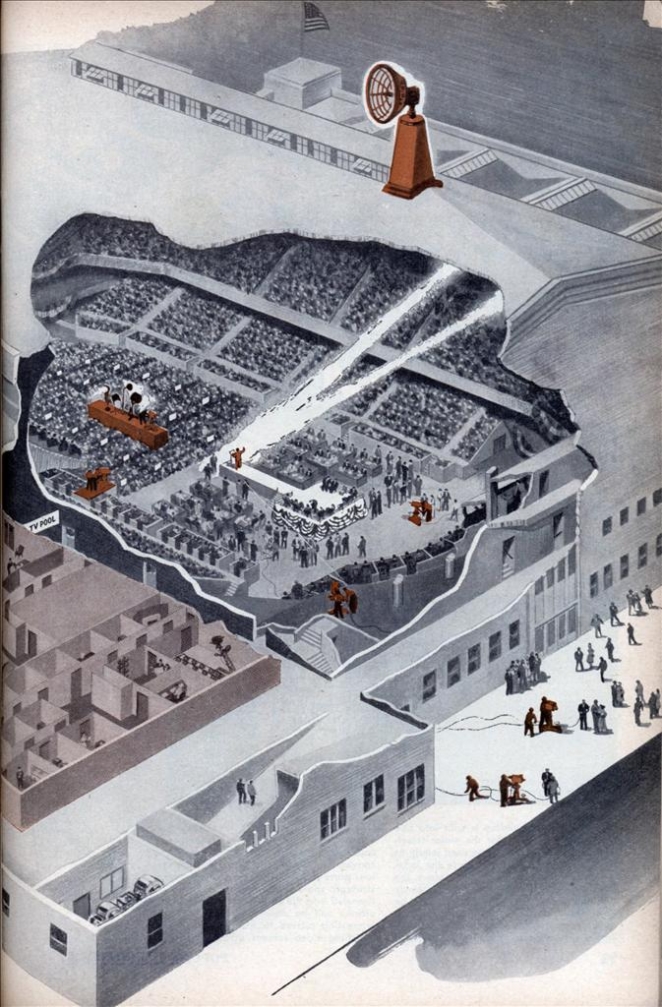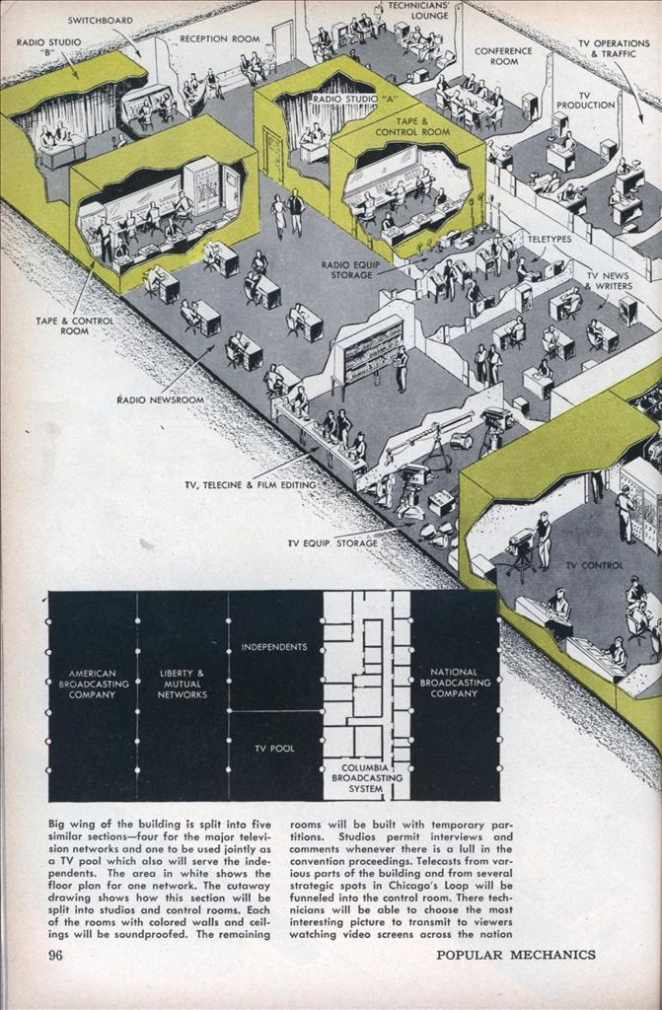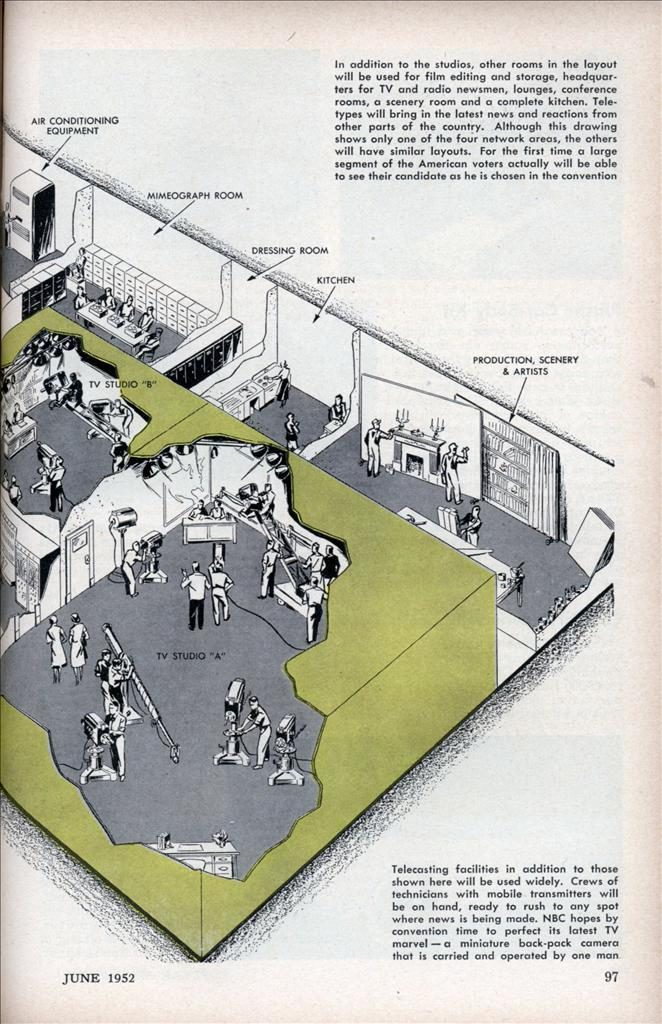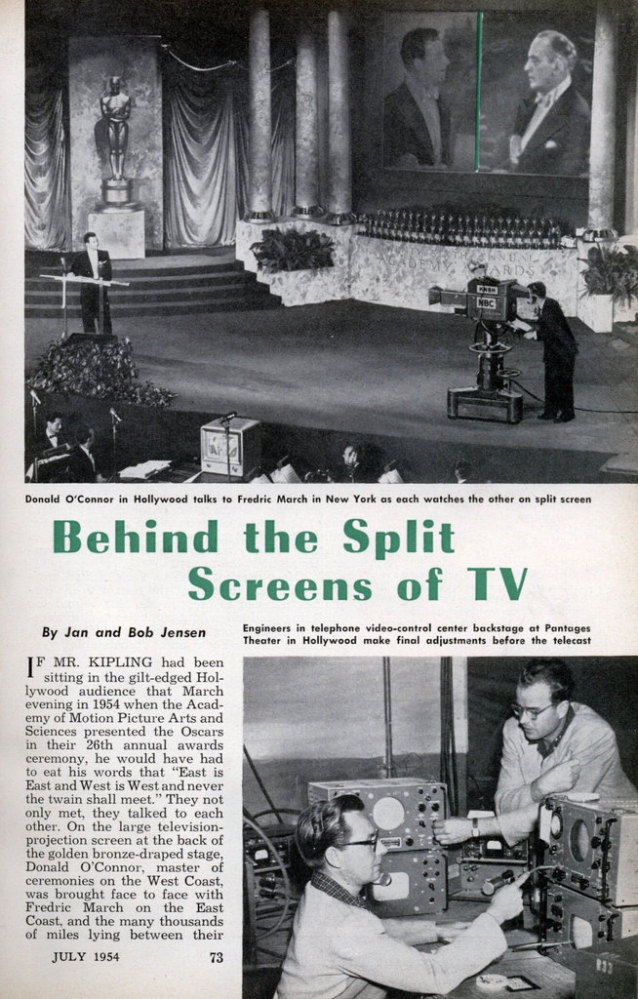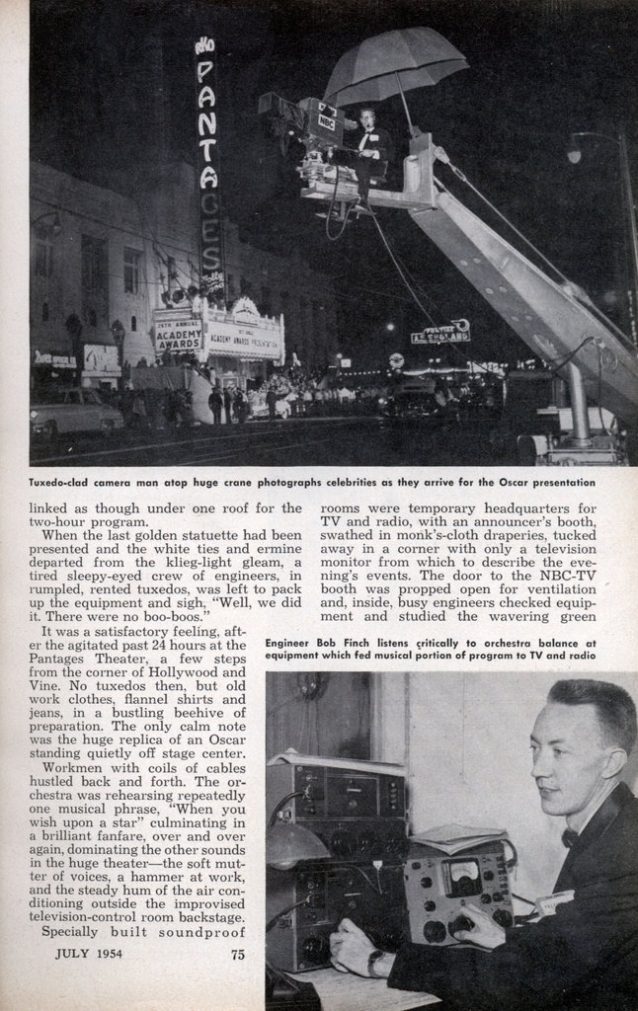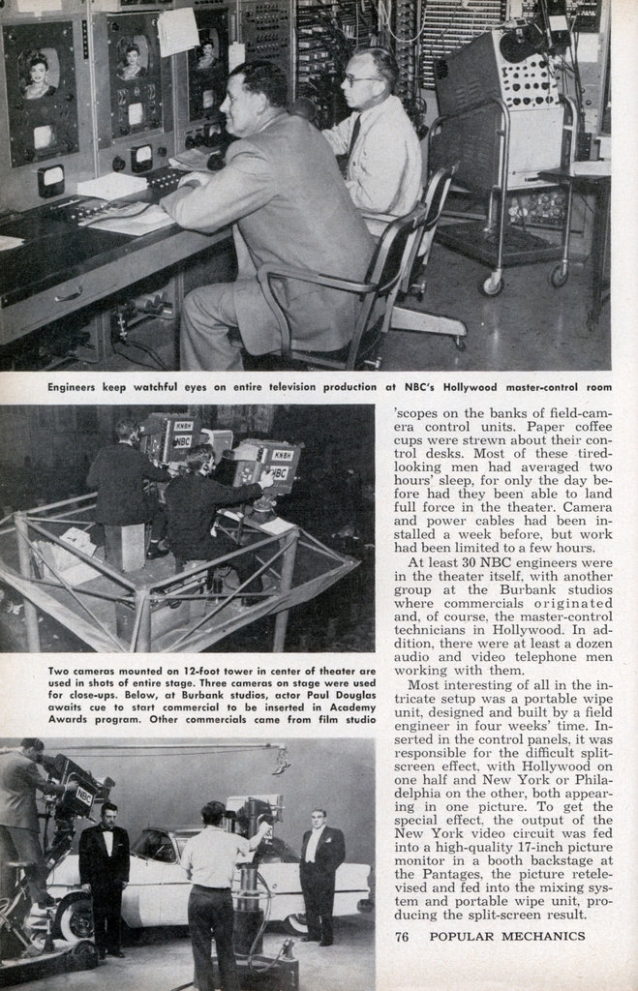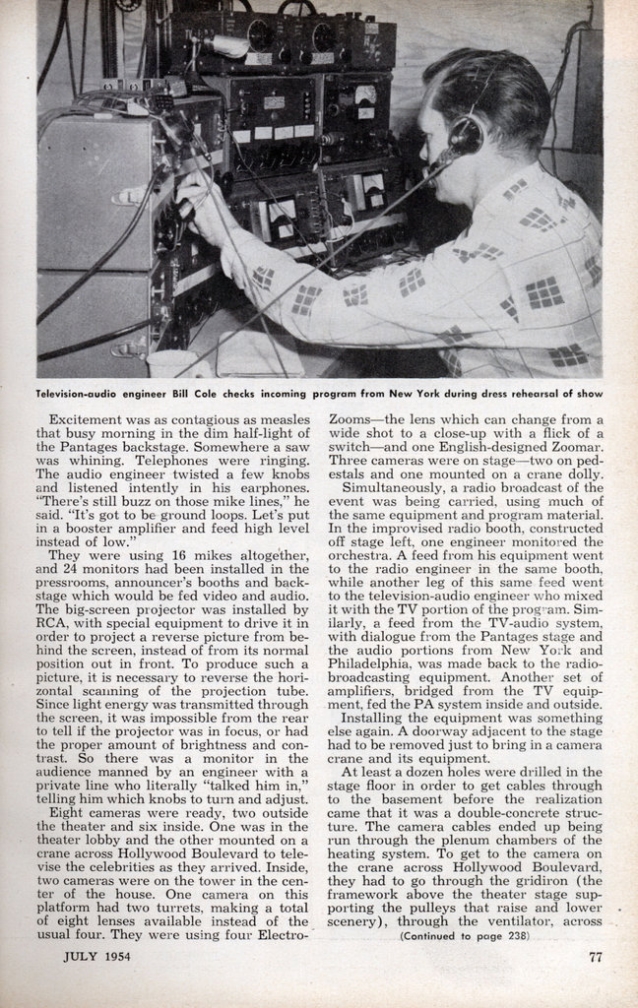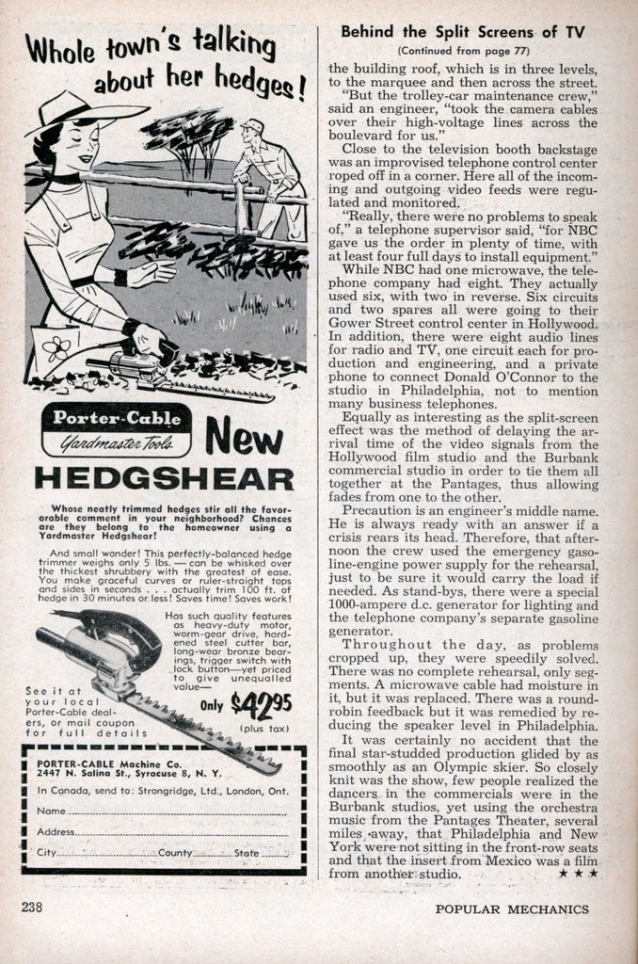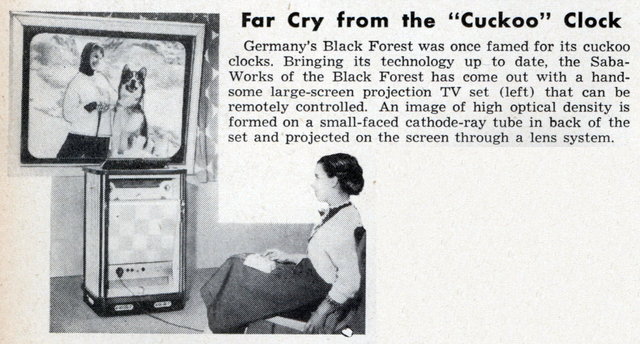1940: Second Philo T. Farnsworth Interview
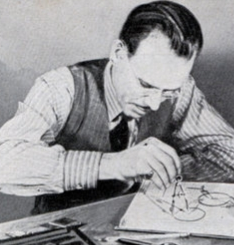
This four-page interview found Philo at age 33 and comes four years after his first major interview above. By now, he and Mr. Sarnoff are probably well acquainted.
1946: Mechanical Color Wheels or Electronic Color?
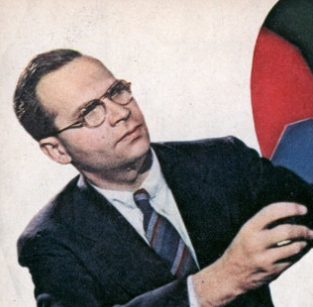
The question of the day: the choice between the CBS color wheel (sequential field system) or the RCA electronic dot matrix.
1947 Color TV Outlook

This is one of the first articles I’ve seen that starts to move the thought process away from the mechanical “spinning color disk” (CBS) concept to a more electronic (RCA) concept.
1949: What Every Family Wants To Know About TV

This is about as good as it gets! These 11 pages from the January 1949 issue of Science Illustrated lays it all out! From how many stations and where, to where the new coaxial cables are running, picture sizes, how many sets in use and much much more.
1952: TV Goes to the Conventions
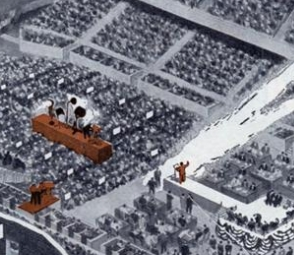
Popular Mechanics shows in detail how one of the 1952 political conventions would be televised from Chicago. These were major broadcast events, and the amount of equipment and people brought in is just amazing.
1954: Behind the Split Screens of TV

Great article on how the first coast-to-coast, split-screen telecast of the 1954 Oscar ceremony was done. Awards were handed out in New York and Los Angeles at the same time, and the full story of how it was done is all here. This should bring back a lot of memories on how much Ma Bell meant to broadcasting in those days.
1955: The DuMont Electronicam

A one-page article on the DuMont Electronicam and its use on Jackie Gleason’s classic program The Honeymooners. It combined television and film.
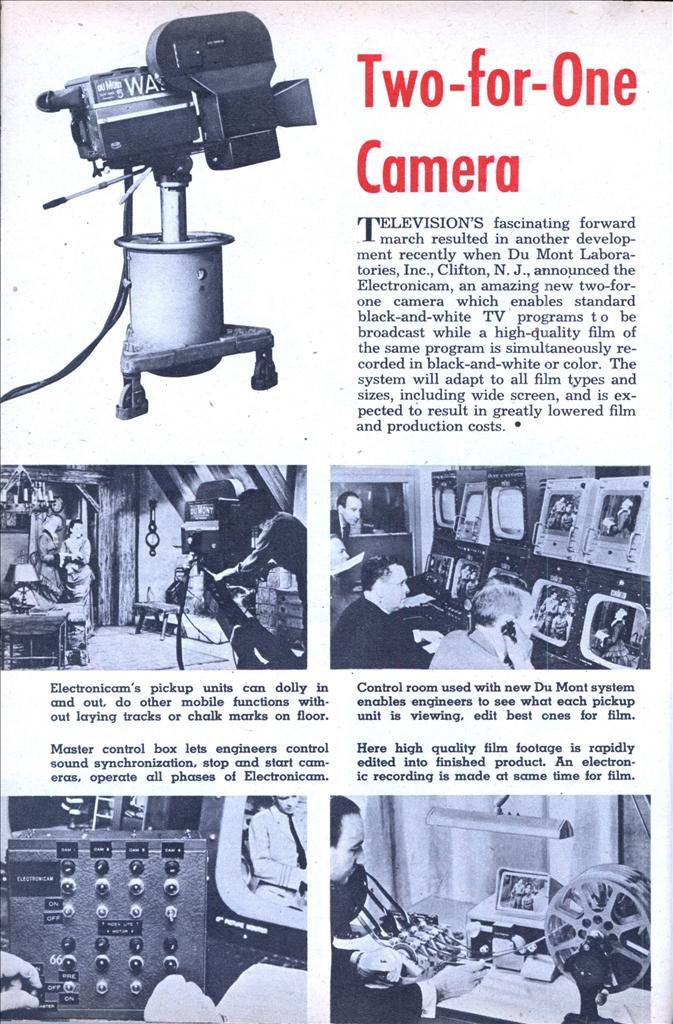 .
.
1955: Ernie Kovacs’ Special Effects
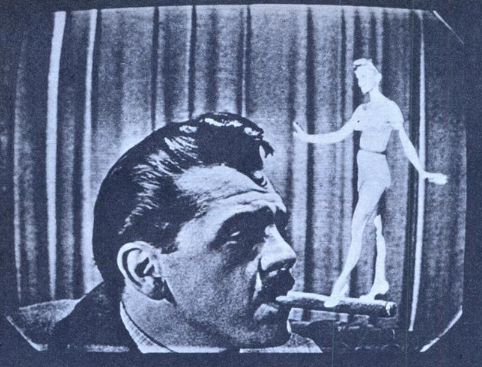
Here is a 1955 article on some of the special effects Ernie Kovacs used on his program, an early pioneer in TV magic and electronic wizardry.
1964: Watch Your Favorite Show ANY Time!

This short article in Popular Science is about the early home video tape offerings. It’s a long way from there to where we got with Beta and VHS.
April 30, 1938…Historic CBS Columbia Square Studios Dedicated
Here are some interesting images, and articles from the day, I think you will appreciate. Notice the date on the sign in the third photo down, is almost one year earlier at the ground breaking
April 30, 1952…TV’s First Toy Commercial, And Other TV Ad Firsts
April 30, 1952…TV’s First Toy Commercial, And Other TV Ad Firsts
On this day, in 1952, Mr. Potato Head became the first toy advertised on national television.
Below is the first animated TV commercial to use identifiable characters. The spot was for Ajax cleanser, which debuted in 1948 and featured the antics of The Ajax Pixies, who not only cleaned the kitchen and bathroom, but sang a catchy jingle which many of us still remember.
Many of us will also remember the Gillette “Look Sharp, Feel Sharp” jingle and the animated Gillette parrot. The first television network sponsor of a sporting event was Gillette Razor Company with the telecast of the Joe Louis vs. Bill Conn heavyweight boxing match, on June 19, 1946. Their commercial spotlighted a line drawing of a parrot called Sharpie. Speaking of “sharp”, this event was the first ever use of the new RCA TK30 Image Orthicon camera, which made much sharper images than it’s predecessors.
The first ever TV commercial advertisement was sponsored by the Bulova Watch company on July 1, 1941. Bulova paid WNBT, $9.00 for a 10-second Bulova Watch Time announcement superimposed on the test pattern at 2:29:50 P.M..
At 2:30 P.M. the telecast began from Ebbets Field in Brooklyn with announcer Ray Forrest doing the play-by-play of a baseball game between the Dodgers & the Phillies. There were 4000 sets for the first broadcast.
Kraft Foods was the first company to sponsor an hour long drama as they lent commercial support for their dramatic anthology “Kraft Television Theater”, which ran on NBC from 1947-58. Their first drama was “Double Door” and starred John Baragrey.
The first color commercial televised in a local show was for Castro Designs (Castro Convertibles), in New York on WNBT. It was first telecast on Aug. 6. 1953.
In response from pressure from a number of concerned citizen groups, the NAB in 1958 outlawed the “Men in White” commercials which depicted actors who simulated doctors recommending medicines to the American public. To get around this ruling, one advertisement later featured a commercial that began “I’m not a doctor, but I play one on TV.”
On January 2, 1971, a federally imposed ban on television cigarette advertisements went into effect.
In 1971, The Federal Trade Commission ruled that such euphemisms as “Leading Brand,” “Brand X” and “The Leading Foreign Import” were only confusing to the public and must be discontinued. This was the birth of the television commercials that directly attacked another product by their “brand name” such as the phrase “More people prefer Pepsi to Coke.”
In a unique collaboration of commercial marketing, the Alka-Selzer Company and H & R Block Company joined forces in the spring of 1987 to calm the queasy feeling that Americans get at tax preparation time. The commercial pitch was “Take Alka-Seltzer and call H & R Block.” This was the first time two major companies jointly pushed their products. By sharing costs, the joint venture would allow the companies to reach a larger group of consumers in both supermarket and tax offices.
In May of 1988, rock star Michael Jackson starred in five Pepsi Cola commercials aired in the Soviet Union to an audience of 150,000,000 people. The commercials were seen during a week-long series called “Posner In America” hosted by Vladimir Posner, Russian journalist/broadcaster. This was the first time in history that an American commercial was shown behind the Iron Curtain. As you read this, I know you are wondering if these are the spots he was filming when his hair caught fire, and the answer is no…that was in 1984. -Bobby Ellerbee
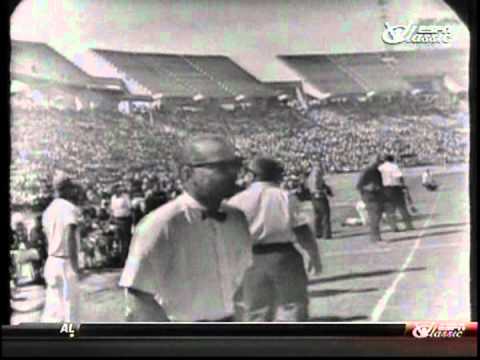

April 29, 1961…ABC’s “Wide World Of Sports” Debuts
April 29, 1961…ABC’s “Wide World Of Sports” Debuts
This video is from the last episode of ABC’s “Wide World Of Sports” debut season which started April 29, 1961. This clip highlights some firsts in football coverage.
This is the first use of a crane camera over the field, microphones on the quarterbacks and possibly, handheld sideline coverage in a professional football game. (NBC used RCA’s Walky Looky on some college games in the late 50s).
In January of ’62, WWOS was given a permanent time slot where it remained for over forty years. The show was the creation of Edgar Scherick, through his company, Sports Programs, Inc. After selling his company to the American Broadcasting Company, and joining them to run ABC Sports, he hired a young Roone Arledge to produce the show.
Around 1956, after graduating with a masters degree from Columbia College, Arlidge got a stage manager’s job at NBC’s New York City station, which was then WRCA. One of his assignments there was to help produce a children’s puppet show hosted by Shari Lewis.
Sometime in late 1960, Arledge convinced his superiors at WRCA to let him film a pilot of a show he called “For Men Only”. While his superiors liked the pilot, they told him they couldn’t find a place in the programming schedule for it. But the WRCA weatherman, Pat Hernon, who hosted the pilot, began showing it around, and Edgar Scherick was one of the people who saw it.
While Scherick wasn’t interested in “For Men Only”, he recognized the talent Arledge had. Arledge realized ABC was the organization he was looking to join. The lack of a formal organization would offer him the opportunity to claim real power when the network matured, so, he signed on with Scherick as an assistant producer for WWOS.
Several months before ABC began broadcasting NCAA college football games, Arledge sent Scherick a remarkable memo, filled with television production concepts which sports broadcasts have adhered to since. Previously, network sporting broadcasts had consisted of simple set-ups, and focused on the game itself. The genius of Arledge in this memo was not that he offered another way to broadcast the game to the sports fan. The genius was to recognize television had to take the sports fan to the game.
In addition, Arledge realized that the broadcasts needed to attract and hold the attention of women viewers. At age 29 on September 17, 1960 he put his vision into reality with ABC’s first NCAA college football broadcast from Birmingham, Alabama, between Alabama Crimson Tide and the Georgia Bulldogs. Sports broadcasting has not been the same since. Go Dawgs! -Bobby Ellerbee
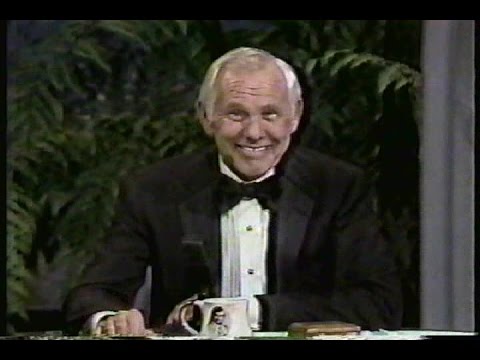

Just For Fun, And Lots Of It! Johnny Caron’s 25th Anniversary Show
Just For Fun, And Lots Of It! Johnny Caron’s 25th Anniversary Show
The opening billboard of famous names is just staggering, and they are all here in clips, but so are some of the show’s greatest disasters, which start at about 31 minutes in. There are also clips of first time appearances from the likes of Steve Martin, Gary Shandling, David Letterman, Jay Leno, and many more. And yes, there are animals, and you know what they say about appearing in scenes with children and animals…here is the proof for both. Enjoy! -Bobby Ellerbee
Original Air Date: October 1, 1987
2 Ultra Rare Views Of The Ed Sullivan Theater…Must See!
2 Ultra Rare Views Of The Ed Sullivan Theater…Must See!
Aside from this super rare 1936 photo of the inside of what was then CBS Radio Theater #3, we also get a 360 degree tour of the Letterman set!
First, thanks to Val Ginter for this amazing shot of the theater in it’s radio configuration. CBS took a long term lease here in 1936 and used it daily. The first radio show to come from here was “Major Bowes Amature Hour”. Interestingly, “Arthur Godfrey’s Talent Scouts” radio show started here in 1946, and in 1948, it was the first television show from the newly renamed CBS Studio 50.
At this link, is a gorgeous 360 degree tour of Letterman’s set, taken just days before the show ended by Google https://www.google.com/maps/@40.7637784,-73.9829199,3a,75y,265.86h,102.33t/data=!3m6!1e1!3m4!1sF6p4b3jIFJwAAAQpmJtrQQ!2e0!7i13312!8i6656
Ralph Levy: Television Director Extraordinaire…
Ralph Levy: Television Director Extraordinaire…
Ralph Levy, TV pioneer and two-time Emmy winning director, is remembered by TV historians as the man who directed the original ‘I Love Lucy’ pilot in March, 1951, which made his passing on the date of Lucy’s 50th Anniversary, all the more poignant.
Born into a family of Philadelphia lawyers, Ralph was stage-struck from an early age. Bowing to family pressures, he earned a degree from Yale University, from which he was graduated just in time to serve in the Army during World War II.
Television was then in its embryonic development stage in New York City, and Levy landed a job of assistant director at CBS. Early assignments included covering sporting events such as boxing, basketball and professional football games. If nothing else, the apprenticeship allowed him to learn all about the cameras, lenses, lights and other new video technology. Ralph was never shy about his interest in musical comedy, and within a few months CBS gave him a chance to switch from sports to entertainment. They assigned him to work on the television edition of “Winner Take All”, a question-and-answer quiz program that had proven very popular on CBS Radio.
In early May of 1949, Ralph was asked to direct a variety show called “The 54th Street Revue”, which was done a the news CBS Studio 52 on West 54th Street. Ralph managed to get the first the show on the air in only 4 days…an accomplishment that earned him both management’s attention and a reputation for working swiftly and efficiently.
That fall, CBS asked Levy to move to Los Angeles to direct a new variety series starring famed radio comedian Ed Wynn. If network TV in New York was just beginning, in Los Angeles it was virtually non-existent…
“The Ed Wynn Show”, Levy soon discovered, would be the first major network show on CBS to originate from Hollywood. It would be shown live on the West Coast every Thursday night at 9PM. A kinescope recording of the show would be made, sent to New York, and played for East Coast and Midwestern stations two weeks later. Such delays were necessary because the transcontinental cable was not yet in place, which would allow for national live telecasts to originate on the West Coast.
Wynn’s show premiered on October 6, 1949, and almost immediately ran into a talent booking problem. Big-name movie performers wanted nothing to do with the new video medium. Wynn started booking talent from the recording industry (Dinah Shore), old friends (Buster Keaton) and stars from network radio. In late December, Ed’s guests were Lucille Ball and Desi Arnaz.
“This was one of the first times I ever did anything on TV,” Lucy recalled later. “So frightening, but so wonderful. I’d never been in such a hurried, chaotic setting with these monstrous television cameras all over the stage and not enough rehearsal. But it was great fun.”
The script that night went out of its way to spotlight 32-year-old Desi, who appeared with Wynn and Ball in a comedy sketch, and even afforded him the opportunity to sing “Babalu.”
A few weeks later, CBS asked Lucy to consider transferring her radio series, “My Favorite Husband”, to TV. They wanted her, but did not know if, or how, her Latin husband would fit in.
Levy, meanwhile, had come to be the network’s fair-haired boy in Hollywood. In April, he expanded his duties to include directing the new Alan Young Show, a weekly half-hour comedy-variety skein starring the young Canadian who today is more remembered for his role, ten years later in the sitcom “Mr. Ed”.
One of the most successful programs on CBS Radio that season was “You Bet Your Life”, starring the irrepressible Groucho Marx. The show’s sponsor, DeSoto-Plymouth Automobiles, was interested in adding a TV version, and both CBS and NBC wanted to carry it. Groucho later recalled, “You Bet Your Life shot up to Number 6 in the ratings. When both major networks, NBC and CBS, approached us about going on television, a bidding war started. Since we were already at CBS, it seemed likely we’d stay there. One of their star directors, Ralph Levy, helped us with the pilot show. When the dust settled, NBC was the high bidder. Levy stayed at CBS.”
“The Ed Wynn Show” ended its nine-month run on July 4, 1950, and Ralph headed to Mexico for a much-needed vacation. He had hardly unpacked when an emergency call came from Harry Ackerman, head of CBS’ Hollywood operations. “He asked me to come back the next day,” Ralph remembered later. “George Burns and Gracie Allen had agreed to go on television, and Harry wanted me at the first production meeting.” So much for Levy’s vacation…
A pilot was prepared and quickly sold to Carnation Milk Company, and “The George Burns – Gracie Allen Show” was scheduled for a fall premiere. George was afraid to take on a weekly show all at once, particularly one that was to be done live, so CBS agreed to air it on an alternate-week basis. Complicating matters, especially for Ralph, was the fact that the network wanted to do the first 6 shows from New York. (The show could get better media coverage there, the network reasoned.) The cast and crew were sent to New York, and Ralph became bi-coastal for three months.
Making his life even more interesting was the fact that George Burns’ best friend, Jack Benny, was toying with the idea of getting into television himself. Naturally, he wanted Ralph to direct. But Benny was even more shy about TV than George and Gracie, and agreed to do only four half-hour specials that first 1950-51 season.
Lucy and Desi Arnaz, meanwhile, spent the summer of 1950 performing a comedy act in vaudeville theatres across the country, and by late fall had convinced CBS to let them try a new TV series together. Lucy’s radio writers, Jess Oppenheimer, Bob Carroll Jr., and Madelyn Pugh, went to work to create the format. Ralph Levy was asked to direct.
“I was anxious to direct Lucy’s pilot because I had worked with her on the Wynn show,” Levy recalled later. “I remember that the script called for Lucy to parade around the living room with a lampshade on her head…trying to prove to Desi she could be a Ziegfeld Girl. I didn’t think she was walking the right way, so I showed her how it should be done, not knowing that she had been a showgirl for many years. Instead of telling me off, she simply played along with me. She was so professional and so good…she walked away with the whole show.”
The pilot was filmed on Friday evening, March 2, 1951 (Desi’s 34th birthday) in Studio A of CBS’ Columbia Square headquarters in Hollywood. It was the same stage used for the Wynn Show a year earlier. “There were only two sets,” Lucy recalled. “One was a living room and the other the nightclub where Desi worked. The show was shot live with a studio audience in attendance, as most TV shows were being done then. There was no tape yet. The images were recorded on film from a TV screen, providing us with the required kinescope.”
By the end of April the Lucy series, now titled “I Love Lucy” had sold to CBS and Philip Morris…neither of which wanted the actual series to be done like the pilot (and the Wynn Show) via kinescope. Lucy balked at moving to the East to do the show live out of New York, so plans were set in motion to have the show filmed in Los Angeles using 35mm film. Levy, CBS’s first choice to direct, begged off: he knew he already had his hands full directing the Alan Young and Burns – Allen series (plus the Jack Benny specials!). Levy also did several, live CBS “Playhouse 90” presentations when his schedule allowed.
Interestingly, a year later, after ‘I Love Lucy’ proved a quality series could be done on film, Burns and Allen decided to do their shows on film, too. Their company, McCadden Productions, moved onto the General Service Studio lot and became neighbors to Desilu and “I Love Lucy”. In 1953, Ralph retired from Burns – Allen, and with The Alan Young Show ceasing production, he concentrated his energies on the now bi-weekly Jack Benny Program. He remained at Benny’s side another four seasons, then returned in 1959 to helm two hour long Benny specials. For these shows, he won his first Emmy Award.
Ralph won a second Emmy two years later for first “Bob Newhart Show”, a weekly half-hour of stand-up comedy and variety.
When filmed sitcoms became the order of the day, Levy adapted: he directed the pilots of “The Beverly Hillbillies” and “Green Acres”, and two seasons of “Petticoat Junction”, all for his friend Paul Henning, one of George Burns’ writers who had since become a successful producer. (Petticoat, reunited him with actress Bea Benaderet, who had been a regular on the Burns show.) Ralph later attempted to do dramas, programs like ‘Hawaii Five-O’, and feature films, but somehow, his heart was not in these projects: he missed the live audiences that early television and the theater had provided. The thrill of “opening night” was missing.
Levy spent several years in England in the 1970s, working for BBC Television, and taught TV production classes at Cal State Northridge and Loyola Marymount University.
Reflecting back on the various stellar performers with which he had worked, Ralph once observed, Groucho really was grouchy, probably because he suffered from an inferiority complex. Wynn was cerebral; Allen was always prepared, funny and “a doll” to work with. Ball was a top-notch clown, hard worker and tough businesswoman. Benny, he always said, was the best of all, “a marvelous man.”
As for the new breed of television comedies, he found many of the shows to be too loud, and vulgar for his taste. Working on modern shows “was not the same as working with Ed Wynn, or George and Gracie, or Jack. These people were from another era of show business; one in which you took literally years to build your comedic character… It’s very different today. The Burns – Allen show and Jack’s show were essentially one-man operations. Nowadays there are literally dozens of people grouped around TV shows, and to get a comedy idea past them, you have to run a gauntlet. And in those days we were enjoying our work. It’s not fun anymore. One guy’s there saying, ‘You’re going overtime,’ another guy’s there saying, ‘You’re over budget,’ everybody’s tensed up and nervous. Oh, sure we had plenty of our own crises, but they were usually constructive ones, based on doing the best possible show we were capable of.” Bobby Ellerbee


April 1981…The Last Episode Of “Soap” Airs On ABC
April 1981…The Last Episode Of “Soap” Airs On ABC
In spite of six months of controversy before it ever hit the air, “Soap” ranked #13 in the top 20 shows of the 1977-78 season and had good ratings is whole four year run. In 2007, Time Magazine, which initially panned the show, named it one of the 100 Best Shows of All-Time. This was Billy Crystal’s first big hit, but the whole cast was exceptional, and many consider the ensemble one of the best of the ’80s.
Here’s a short clip that pretty much characterizes the feel of the show. What a hoot! Enjoy and share! -Bobby Ellerbee
https://www.youtube.com/watch?v=DwDbd4jQpkA
To me, this is one of the funniest clips from TV ever. If you were a fan of Soap, you will love this.
A Tribute To…”Your Show Of Shows”, Part 1 of 2
A Tribute To…”Your Show Of Shows”, Part 1 of 2
On February 25, 1950, “Your Show Of Shows” debuted On NBC, as part of a two-and-a-half-hour block that was called “Saturday Night Review.” YSOS is the great grandaddy of “Saturday Night Live”.
The first hour, was “The Jack Carter Show,” a comedy and variety affair airing at 8 Eastern live from WMAQ in Chicago. Below is a rare photo from Carter’s show with him and a new comedy team you may have heard of…Dean Martin and Jerry Lewis.
At 9, ninety minutes of fun on YSOS hit the air and was followed at 10:30 by “Your Hit Parade”. Jack Carter’s show was replaced the next year by “The All Star Review.” This two and a half hour block was the first time NBC VP Pat Weaver’s “participating sponsor” plan was used, which gave us the now famous phrase; “Brought to you in part by _____,”
The show debuted from NBC’s first theater converted to television, The International at 5 Columbus Circle. In Part 2, you will see rare photos from inside the International, you probably have never seen, till now.
YSOS was actually a carryover from a 1949 show that had been so popular, it was canceled!?!? What? It’s true!
“The Admiral Broadway Revue” was the start of one of television’s greatest early comedy teams…Sid Caesar and Imogene Coca, with the great Max Liebman producing. The show had great ratings but unbelievably, Admiral (who “owned” the show) ended it in May of ’49. It seems that the show generated sales of Admiral TV sets that were far beyond their capacity to manufacture them. Admiral had to either end the show, or build a new plant.
Since they owned the show, it could not continue with another sponsor, and they would not sell it. Such were the sponsorship problems of the early days of television. Soon after this, NBC Vice President Pat Weaver would solve this problem by having the network own the shows and sell spots to sponsors. He is the man that brought magazine style ad sales to radio and television, which spread the cost of production among several advertisers.
On February 25, 1950, three of The International’s brightest years started with the debut of “Your Show Of Shows,” The fourth year of YSOS, would come from NBC’s Center Theater, and below is a rare printed program, given to the live audience members…this is thought to be the only television show that ever did this.
Caesar and Coca had a cast of writers that have become the “who’s who” of comedy including Mel Brooks, Carl Reiner, Neil Simon, Mel Tolkin, Larry Gelbart and more.
Below is a classic clip from the show, it is The Haircuts song parody “You Are So Rare” sketch. Enjoy and share! -Bobby Ellerbee
A Tribute To…”Your Show Of Shows”, Part 2 of 2
A Tribute To…”Your Show Of Shows”, Part 2 of 2
Rare photos from inside NBC’s first converted television theater, The International Theater, at 5 Columbus Circle. Please read the text below the photo block, but here is some of what you are looking at. In the photo at the top, we are able to see into the control room, as the work lights are on. There is a bank of monitors across the bottom of the window. On the camera ramp, on of 4 RCA TK30s is mounted on a Houston Fearless Panoram dolly and the Mole-Richardson boom is there too.
Second photo shows the orchastra area, and most live shows of this era, always had the band in the same place. Third photo down, notice the camera pit for floor level shots, used mostly on dance numbers. Forth photo down, another sound boom and in the center, a Saner Crane…one of the first made as Mr. Saner was once an NBC cameraman. Finally in the bottom photo, we see the announcer desk, and a “limbo” backdrop. Limbo backdrops were used as places that an time filling sketch or commercial could be done while the main stage was being set for another scene.
ULTRA RARE! NBC’s International Theater…”Your Show Of Shows”
For four years, from 1950 – 1954, the biggest Saturday night show in television came from this theater at 5 Columbus Circle. Ninety minutes of weekly comedy history were made on this stage as Sid Caesar, Imogene Coca, Howard Morris and Carl Reiner entertained a nation like none had ever done, with the great Max Leibman producing.
Ironically, Caesar and Coca’s first show from here, “The Admiral Broadway Revue” in 1949 was so successful, the sponsor had to either pull the plug on the show they owned, or build a new plant to make Admiral TV sets, so they canceled the show that was airing live not only on NBC, but on the Dumont network as well.
There is more on the photos, so click through them and take a good look. Many thanks to Nick Van Hoogstraten for these gems! Enjoy and share! -Bobby Ellerbee
Some Of The First RCA TK30s Delivered…KSD TV, St. Louis
Some Of The First RCA TK30s Delivered…KSD TV, St. Louis
As I mentioned earlier this week, the first five RCA TK30 Image Orthicon cameras ever built, were delivered to NBC New York for the Lewis – Conn fight in June of 1946. Naturally, being owned by RCA, gets you to the front of the line, and NBC got the first 25 units built. Their cameras also came with electronic viewfinders, which were not available to local market broadcasters at the time, but were to network customers like CBS, and ABC.
Why, because white phosphorus was in short supply to non military users. Although WW II was over, the War Department had given military radar buildup first priority. This affected RCA’s ability to produce television sets too, but since they also built radar units for the military, they managed to come up with enough to equip the NBC, and other network’s TK30s with electronic viewfinders.
RCA’s official release date to independent broadcasters, and other networks was October 1, 1946, and in this first photo, we see the KSD cameras arriving at Lambert Field in St. Louis on September 30, 1946. The station owner, the “St. Post-Dispatch” flew to Camden to pick them up, and since there were no employees at KSD-TV yet (it went on the air February 8, 1947), these are KSD radio engineers unloading them.
All of these photos were taken in 1947, except the last one, that shows the camera with a viewfinder, which was from April of 1949. I think it took RCA about a year to work out the phosphorus issue, and supply their customers with viewfinders. Thanks to John Coleman for the photos. -Bobby Ellerbee

